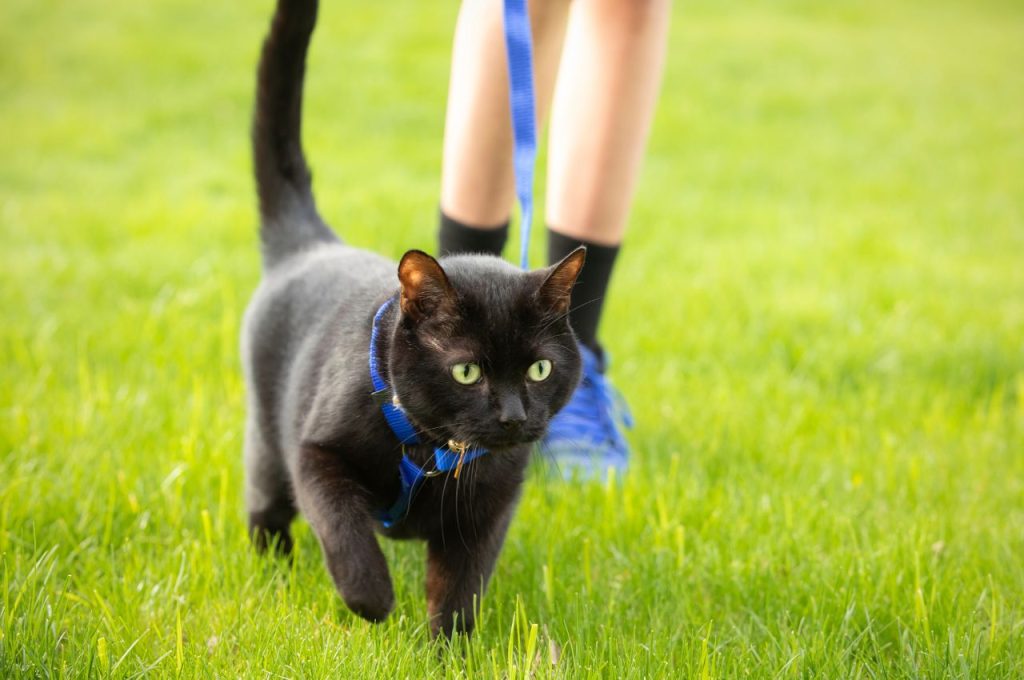Train a cat to behave by consistently rewarding good behavior and setting clear boundaries. Use positive reinforcement techniques like treats and praise.
Training a cat to behave is a process that requires patience and consistency. Unlike dogs, cats respond best to positive reinforcement, which means rewarding them for good behavior rather than punishing them for bad behavior. This training approach is crucial in building a trusting relationship with your feline friend.
Establishing a routine, using treats, and engaging in regular playtime can significantly influence your cat’s willingness to learn and adhere to rules. By focusing on these elements, you will create a harmonious environment where the cat understands what is expected. Remember, every cat is unique, and techniques that work for one may not work for another, so it’s essential to adapt your strategy to suit your cat’s personality.
Understanding Your Cat’s Behavior
Training a cat to behave requires a blend of knowledge, patience, and strategy. Understanding your feline’s behavior is an essential first step. By recognizing what is normal for a cat, it becomes easier to identify and shape your pet’s behavior. This section sheds light on key aspects that influence how cats act and react to various stimuli within their environment.

Developmental Stages of Cats
Cats undergo several developmental stages from kittenhood to adulthood. Each phase plays a critical role in shaping the behaviors of your furry friend:
- Socialization Period (2-7 weeks): Kittens learn to interact with other cats and humans.
- Ranking Period (2-6 months): Young cats establish their social ranking within the household or feline community.
- Adolescence (6-18 months): A time of exploration and pushing boundaries.
- Adulthood (18 months onward): Cats often settle into their long-term behavior patterns.
Natural Behaviors of Cats
Cats have a range of natural behaviors rooted in their instincts. These include:
| Behavior | Description |
| Scratching | Keeps claws sharp and mark territory with scent glands in their paws. |
| Hunting | Even domestic cats retain a strong instinct to stalk and pounce on prey. |
| Climbing | Height offers safety and a better vantage point in a cat’s mind. |
| Grooming | Helps cats stay clean, regulate their temperature, and reduce stress. |
Common Behavior Problems in Cats
Despite the understanding of their instincts, cats can develop behavior problems. Some of the most common issues include:
- Aggression: This can be directed towards other pets or humans, often stemming from fear, territorial disputes, or poor socialization.
- Inappropriate Elimination: Urinating or defecating outside the litter box may indicate health issues or stress.
- Excessive Vocalization: Yowling or loud meowing might occur due to various reasons like seeking attention, hunger, or medical problems.
- Scratching Furniture: A natural behavior that can be redirected to appropriate scratching posts or pads.
Addressing these behavior challenges often starts with understanding the root causes and then applying gentle guidance and consistency to encourage your cat towards desirable actions.
Creating A Positive Environment
A positive environment serves as the foundation for effective cat training. Cats flourish in settings that cater to their physical and psychological needs, providing them with comfort and security. Ensuring your feline friend has everything they need can dramatically enhance their receptivity to training. Let’s delve into the critical elements of fostering an environment that encourages good behavior in cats.
Providing Basic Needs
The first step in crafting a conducive training atmosphere is addressing your cat’s basic requirements. Meeting these needs reduces stress and diminishes behavioral issues.
- Shelter: A cozy, secure space for your cat to retreat to when they need privacy.
- Nutrition: High-quality cat food that aligns with their age, size, and health requirements.
- Hydration: Constant access to fresh water.
- Healthcare: Regular check-ups with a veterinarian to ensure your cat remains in peak condition.
Providing Enrichment
Enrichment is essential for a cat’s mental and physical well-being. It curtails boredom and prevents destructive behaviors. Here are some methods to enrich your cat’s life:

| Type of Enrichment | Examples |
| Physical | Climbing towersInteractive toysRegular play sessions |
| Intellectual | Puzzle feedersTraining exercisesHide-and-seek games |
| Sensory | Catnip-infused toysWindow perches for bird-watchingVaried textures to explore |
Establishing A Routine
Cats are creatures of habit and take comfort in a predictable routine. An established schedule for meals, play, and training keeps stress levels low, paving the way for a tranquil training environment. Outline each day with consistency in:
- Feeding times
- Playtime and exercise
- Training sessions
- Rest and downtime
By meticulously addressing these aspects, you create a serene setting conducive to learning. This encourages your cat to engage in positive behaviors and respond favorably to training efforts.
Training Techniques for Cats
Understanding how to effectively train a cat can transform a mischievous feline into a well-behaved pet. Cats may have a reputation for being independent, but with the right training techniques, they can learn a variety of behaviors and tricks. Let’s delve into three popular methods that cat owners can employ to teach their furry companions good manners and impressive skills.
Reward-based Training
Cats respond exceptionally well to reward-based training, which is grounded in positive reinforcement. This technique involves rewarding a cat immediately after they perform a desired behavior, thereby encouraging them to repeat it. The rewards can come in different forms:
- Treats: Small, tasty morsels that your cat finds irresistible.
- Affection: Physical praise like petting or cuddling.
- Playtime: Engaging in a favorite game or activity.
Consistency is key. Ensure the reward follows the behavior quickly to help the cat connect the two. Keep training sessions short and sweet to maintain your cat’s attention.
Clicker Training
Clicker training is a specific form of reward-based training that utilizes a sound—a click—to mark the exact moment a cat performs the correct behavior. The steps for clicker training are straightforward:
- Get the cat’s attention with the clicker.
- Wait for the cat to perform the desired behavior, or gently guide them to it.
- Instantly click as the behavior occurs.
- Immediately reward the cat with a treat or affection.
The distinctive sound of the clicker acts as a precise signal to the cat that they’ve done something right and that a reward is on its way. It’s an effective tool to communicate with your cat and reinforce good behaviors quickly.
Target Training
Target training takes advantage of a cat’s natural curiosity and teaches them to touch an object with their nose or paw. By using a target stick or even just a fingertip, you can guide your cat to follow or move to specific locations. The steps include:

| Step | Instruction |
| 1 | Introduce the target to your cat. |
| 2 | Encourage them to touch it by holding it close. |
| 3 | Reward any movement towards or contact with the target. |
| 4 | Gradually increase the distance and difficulty as your cat learns. |
Target training is a powerful technique that enables cats to learn complex tasks and even navigate agility courses. Remember, patience and positive reinforcement go a long way when training your cat.
Frequently Asked Questions on How to Train A Cat to Behave
Here are some questions about training cats to behave.
How do you fix a misbehaving cat?
Correcting a misbehaving cat involves several steps. Identify triggers and eliminate them. Engage in regular playtime. Use positive reinforcement when your cat behaves well. Consistency is key in training. Consult a vet for underlying health issues.
How do I make my cat well-behaved?
To improve your cat’s behavior, consistently enforce rules and give rewards for obedience. Engage in regular playtime, provide stimulating toys, and ensure a structured routine. Implement clicker training for positive reinforcement and seek professional advice if behavioral issues persist.
How do you teach a cat no?
Start with a firm “no” when your cat misbehaves. Use clapping or a noise maker to reinforce the command. Be consistent with your response to ensure understanding. Reward good behavior to encourage compliance. Avoid physical punishment; it is ineffective and can harm your relationship.
Conclusion
Training your feline friend requires patience, consistency, and positive reinforcement. Embrace every little win as your cat learns and grows. Remember, a well-behaved cat is a happy cat, and the bond you form through training is irreplaceable. Start your journey to a more harmonious home life with your cat today!
With time and dedication, you’ll enjoy the rewarding experience of having a well-behaved and happy feline companion. Happy training!
